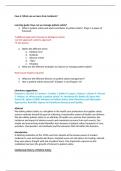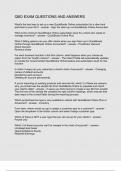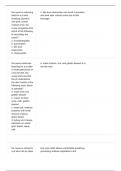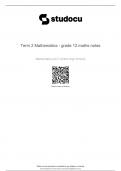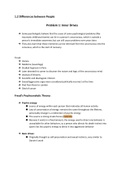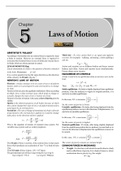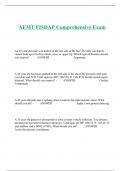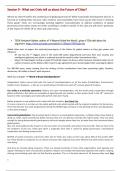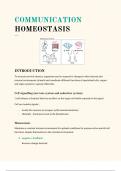Case 4: What can we learn from incidents?
Learning goals: How can we manage patient safety?
1. What is patient safety and what contributes to patient safety? (Page 1-6 paper of
Emanuel)
Traditional approach: focused on biological system
Current approach: systems approach
See lecture
2. Define the different terms:
a. Medical error
b. Incidents
c. Adverse events
d. “Slips”
e. Mistakes
3. What are the different strategies to improve or manage patient safety?
Root-Cause-Analysis squared:
4. What are the different theories on patient safety management?
5. How is patient safety measured? (Chapter 1 and Chapter 14)
Literature suggestions:
Emanuel L, Berwick D, Conway J, Combes J, Hatlie M, Leape L, Reason J, Schyve P, Vincent
C, Walton, M. What exactly is patient safety? In: Henriksen KH, Battles JB, Keyes MA,
Grady ML, editors (2008). Advances in Patient Safety: New Directions and Alternative
Approaches. Rockville: Agency for Healthcare Research and Quality.
Abstract
We define patient safety as a discipline in the health care professions that applies safety
science methods toward the goal of achieving a trustworthy system of health care delivery.
We also define patient safety as an attribute of health care systems that minimizes the
incidence and impact of adverse events and maximizes recovery from such events. Our
simple and overarching model identifies four domains of patient safety (recipients of care,
providers, therapeutics, and methods) and the elements that fall within the domains.
Introduction
A defining realization of the 1990s was that, despite all the known power of modern
medicine to cure and ameliorate illness, hospitals were not safe places for healing. Instead,
they were places fraught with risk of patient harm. One important response to this
realization has been the growth of interest in patient safety.
Intellectual History of Patient Safety
,Critical assumptions in health care were rewritten by patient safety thinking. How to
understand why people make errors that lead to adverse events shifted from a single cause,
legalistic framework to a systems engineering design framework, and in so doing, it changed
forever the way people think about health care delivery.
Limiting Blame
The realization that adverse events often occur because of system breakdowns, not simply
because of individual ineptitude prompted the change. Blaming had a toxic effect:
- Practitioners rarely revealed mistakes, and patients and supervisors were frequently
kept in the dark.
- Low reporting made learning from errors nearly impossible, and legal counsel often
supported and encouraged this approach in order to minimize the risk of malpractice
litigation.
Latent errors are upstream defects in the design of systems, organizations, management,
training, and equipment (“blunt end”) that lead individuals at the sharp end to make
mistakes. To punish individuals for such mistakes seemed to make little sense, since errors
are bound to continue until underlying causes are remedied
Systems Thinking
Thought leaders in health care offered persuasive arguments that errors could be reduced
by redesigning systems and processes using human factors principles. These could reduce
mistakes through design features, including standardization, simplification, and the use of
constraints. One such constraint is a “forcing function,” which is a design characteristic that
makes error impossible (e.g., incompatible connectors that prevent connecting an
anesthetic gas to the oxygen port of an anesthesia machine).
Transparency and Learning
The idea that adverse events could yield information was not new, but as it was newly
applied in health care, it acquired a new potency. The notion that sharing information about
medical errors was essential for effective patient safety outcomes became urgent.
Commentators asserted that the more error-related information was shared, the better
lessons could be implemented industrywide.4 The possibility that knowledge of systems
might require an understanding of how things go wrong was demanding attention.
Culture and Professionalism
Clinicians, governing boards, executive leaders, and middle managers of health care delivery
organizations were being increasingly encouraged to think in terms of building high-
reliability organizations. This required a culture change to one that refrained from assigning
“sharp-end” blame for mistakes; that incentivized learning by fully disclosing information
about mistakes, failure, and near misses; that trained and provided support to clinicians
involved in inherently risky work; and that disclosed all relevant facts to injured parties.
Accountability for Delivering Effective, Safe Care
The three-phase approach to establishing the efficacy and safety of new medical therapies
1. Phase 1, clinical trials to assess safety;
2. Phase 2, clinical trials to ascertain efficacy; and
3. Phase 3, trials to compare it with another standard intervention—was essential.
,Health Care as an Industry
Rising and apparently uncontrollable health care costs, coupled with increasing evidence of
poor quality, ushered in the managed care era, along with demands from the public for
accountability. Additionally, increased media exposure of preventable medical errors raised
troubling questions that propelled a search for new solutions.
Rethinking Risk
Thought leaders from medicine and policymakers began to carve a new way of
understanding risk, new ways to reaffirm relationships with patients, and a new way of
addressing the shocking realities that epidemiologic studies had presented.
Emphasizing Teamwork as Well as Dyadic Relationships
Early attempts at systems change revealed one Achilles heel of implementation:
dysfunctional relationships between clinicians and other workers. Mirroring some of the
developments in aviation—in which a focus on teamwork complemented attention to
refinement of mechanical systems—health care began to recognize the importance of team
functioning, particularly for communicating across authority gradients. Training in teamwork
became a foundational building block for the new field of patient safety.
Defining Patient Safety
Although the Institute of Medicine (IOM) defined safety as “freedom from accidental
injury,” patient safety as a discipline or field of inquiry and action has not been fully defined
to date in the major consensus statements of the organizations that have propelled its
existence.
Health care quality problems were classified into three categories: underuse, overuse, and
misuse, all of which the evidence shows are common. Misuse was further defined as the
preventable complications of treatment.
The National Patient Safety Foundation identified the key property of safety as emerging
from the proper interaction of components of the health care system, thereby leading the
way to a defined focus for patient safety, namely systems. Its goal has been defined as:
“[t]he avoidance, prevention, and amelioration of adverse outcomes or injuries stemming
from the process of care.”
Our Definition of Patient Safety
Patient safety is a discipline in the health care sector that applies safety science methods
toward the goal of achieving a trustworthy system of health care delivery. Patient safety is
also an attribute of health care systems; it minimizes the incidence and impact of, and
maximizes recovery from, adverse events.
The Why, What, Where, How, and Who of Patient Safety
Why does the field of patient safety exist? Patient safety as a discipline began in response to
evidence that adverse medical events are widespread and preventable, and as noted above,
that there is “too much harm.” The goal of the field of patient safety is to minimize adverse
, events and eliminate preventable harm in health care. Depending on one’s use of the term
“harm,” it is possible to aspire to eliminate all harm in health care.
What is the nature of patient safety? Patient safety is a relatively new discipline within the
health care professions. Applying safety sciences to health care requires inclusion of experts
with new source disciplines, such as engineering, but without any divergence from the goals
or inherent nature of the medical profession.
Patient safety is a property that emerges from systems design. Patient safety must be an
attribute of the health care system. Patient safety seeks high reliability under conditions of
risk. Illness presents the first condition of risk in health care. Patient safety applies to the
second condition: the therapeutic intervention. Sometimes the therapeutic risk is audacious,
such as when a patient’s heart is lifted, chilled, cut, and sewn during cardiac transplantation
surgery. Risk and safety are flip sides of the therapeutic coin.
Two tenets of complexity theory apply: First, the greater the complexity of the system, the
greater is the propensity for chaos. Second, in open, interacting systems, unpredictable
events will happen.
Safety systems include design of materials, procedures, environment, training, and the
nature of the culture among people operating in the system.
Patient safety is a property that is designed for the nature of illness. High-reliability design is
a concept that was not originally developed for health care. However, health care has some
essential features in common with how high-reliability design has evolved. While often
complex and unpredictable, it can have the ultimate high-stakes outcome: preservation of
life.
Another unique feature is the natural progression of illness. By definition, when illness care
begins, something has already gone wrong. Thus, in many medical situations, failure to
provide the correct intervention causes harm to the patient. The patient safety discipline
acknowledges the need to include harm due to omission of action, as well as the obvious
harm due to actions taken.
Patient safety is a property dependent on open learning. Patient safety has another inherent
feature that derives directly from its dependence on errors and adverse events as a main
source of understanding. It depends on a culture of openness to all relevant perspectives in
which those involved in adverse events are treated as partners in learning. In this sense,
patient safety espouses continuous cycles of learning, reporting of adverse events or near
misses, dissemination of lessons learned, and the establishment of cultures that are trusted
to not cast unfair blame.
Trustworthiness is essential to the concept of patient safety. The health care system
designed for patient safety is trustworthy. This is not because errors will not be made and
adverse events will never happen, but because the health care system holds itself
accountable to applying safety sciences optimally. Patient safety (as an attribute) prevents
avoidable adverse events by paying attention (as a discipline) to systems and interactions,
Learning goals: How can we manage patient safety?
1. What is patient safety and what contributes to patient safety? (Page 1-6 paper of
Emanuel)
Traditional approach: focused on biological system
Current approach: systems approach
See lecture
2. Define the different terms:
a. Medical error
b. Incidents
c. Adverse events
d. “Slips”
e. Mistakes
3. What are the different strategies to improve or manage patient safety?
Root-Cause-Analysis squared:
4. What are the different theories on patient safety management?
5. How is patient safety measured? (Chapter 1 and Chapter 14)
Literature suggestions:
Emanuel L, Berwick D, Conway J, Combes J, Hatlie M, Leape L, Reason J, Schyve P, Vincent
C, Walton, M. What exactly is patient safety? In: Henriksen KH, Battles JB, Keyes MA,
Grady ML, editors (2008). Advances in Patient Safety: New Directions and Alternative
Approaches. Rockville: Agency for Healthcare Research and Quality.
Abstract
We define patient safety as a discipline in the health care professions that applies safety
science methods toward the goal of achieving a trustworthy system of health care delivery.
We also define patient safety as an attribute of health care systems that minimizes the
incidence and impact of adverse events and maximizes recovery from such events. Our
simple and overarching model identifies four domains of patient safety (recipients of care,
providers, therapeutics, and methods) and the elements that fall within the domains.
Introduction
A defining realization of the 1990s was that, despite all the known power of modern
medicine to cure and ameliorate illness, hospitals were not safe places for healing. Instead,
they were places fraught with risk of patient harm. One important response to this
realization has been the growth of interest in patient safety.
Intellectual History of Patient Safety
,Critical assumptions in health care were rewritten by patient safety thinking. How to
understand why people make errors that lead to adverse events shifted from a single cause,
legalistic framework to a systems engineering design framework, and in so doing, it changed
forever the way people think about health care delivery.
Limiting Blame
The realization that adverse events often occur because of system breakdowns, not simply
because of individual ineptitude prompted the change. Blaming had a toxic effect:
- Practitioners rarely revealed mistakes, and patients and supervisors were frequently
kept in the dark.
- Low reporting made learning from errors nearly impossible, and legal counsel often
supported and encouraged this approach in order to minimize the risk of malpractice
litigation.
Latent errors are upstream defects in the design of systems, organizations, management,
training, and equipment (“blunt end”) that lead individuals at the sharp end to make
mistakes. To punish individuals for such mistakes seemed to make little sense, since errors
are bound to continue until underlying causes are remedied
Systems Thinking
Thought leaders in health care offered persuasive arguments that errors could be reduced
by redesigning systems and processes using human factors principles. These could reduce
mistakes through design features, including standardization, simplification, and the use of
constraints. One such constraint is a “forcing function,” which is a design characteristic that
makes error impossible (e.g., incompatible connectors that prevent connecting an
anesthetic gas to the oxygen port of an anesthesia machine).
Transparency and Learning
The idea that adverse events could yield information was not new, but as it was newly
applied in health care, it acquired a new potency. The notion that sharing information about
medical errors was essential for effective patient safety outcomes became urgent.
Commentators asserted that the more error-related information was shared, the better
lessons could be implemented industrywide.4 The possibility that knowledge of systems
might require an understanding of how things go wrong was demanding attention.
Culture and Professionalism
Clinicians, governing boards, executive leaders, and middle managers of health care delivery
organizations were being increasingly encouraged to think in terms of building high-
reliability organizations. This required a culture change to one that refrained from assigning
“sharp-end” blame for mistakes; that incentivized learning by fully disclosing information
about mistakes, failure, and near misses; that trained and provided support to clinicians
involved in inherently risky work; and that disclosed all relevant facts to injured parties.
Accountability for Delivering Effective, Safe Care
The three-phase approach to establishing the efficacy and safety of new medical therapies
1. Phase 1, clinical trials to assess safety;
2. Phase 2, clinical trials to ascertain efficacy; and
3. Phase 3, trials to compare it with another standard intervention—was essential.
,Health Care as an Industry
Rising and apparently uncontrollable health care costs, coupled with increasing evidence of
poor quality, ushered in the managed care era, along with demands from the public for
accountability. Additionally, increased media exposure of preventable medical errors raised
troubling questions that propelled a search for new solutions.
Rethinking Risk
Thought leaders from medicine and policymakers began to carve a new way of
understanding risk, new ways to reaffirm relationships with patients, and a new way of
addressing the shocking realities that epidemiologic studies had presented.
Emphasizing Teamwork as Well as Dyadic Relationships
Early attempts at systems change revealed one Achilles heel of implementation:
dysfunctional relationships between clinicians and other workers. Mirroring some of the
developments in aviation—in which a focus on teamwork complemented attention to
refinement of mechanical systems—health care began to recognize the importance of team
functioning, particularly for communicating across authority gradients. Training in teamwork
became a foundational building block for the new field of patient safety.
Defining Patient Safety
Although the Institute of Medicine (IOM) defined safety as “freedom from accidental
injury,” patient safety as a discipline or field of inquiry and action has not been fully defined
to date in the major consensus statements of the organizations that have propelled its
existence.
Health care quality problems were classified into three categories: underuse, overuse, and
misuse, all of which the evidence shows are common. Misuse was further defined as the
preventable complications of treatment.
The National Patient Safety Foundation identified the key property of safety as emerging
from the proper interaction of components of the health care system, thereby leading the
way to a defined focus for patient safety, namely systems. Its goal has been defined as:
“[t]he avoidance, prevention, and amelioration of adverse outcomes or injuries stemming
from the process of care.”
Our Definition of Patient Safety
Patient safety is a discipline in the health care sector that applies safety science methods
toward the goal of achieving a trustworthy system of health care delivery. Patient safety is
also an attribute of health care systems; it minimizes the incidence and impact of, and
maximizes recovery from, adverse events.
The Why, What, Where, How, and Who of Patient Safety
Why does the field of patient safety exist? Patient safety as a discipline began in response to
evidence that adverse medical events are widespread and preventable, and as noted above,
that there is “too much harm.” The goal of the field of patient safety is to minimize adverse
, events and eliminate preventable harm in health care. Depending on one’s use of the term
“harm,” it is possible to aspire to eliminate all harm in health care.
What is the nature of patient safety? Patient safety is a relatively new discipline within the
health care professions. Applying safety sciences to health care requires inclusion of experts
with new source disciplines, such as engineering, but without any divergence from the goals
or inherent nature of the medical profession.
Patient safety is a property that emerges from systems design. Patient safety must be an
attribute of the health care system. Patient safety seeks high reliability under conditions of
risk. Illness presents the first condition of risk in health care. Patient safety applies to the
second condition: the therapeutic intervention. Sometimes the therapeutic risk is audacious,
such as when a patient’s heart is lifted, chilled, cut, and sewn during cardiac transplantation
surgery. Risk and safety are flip sides of the therapeutic coin.
Two tenets of complexity theory apply: First, the greater the complexity of the system, the
greater is the propensity for chaos. Second, in open, interacting systems, unpredictable
events will happen.
Safety systems include design of materials, procedures, environment, training, and the
nature of the culture among people operating in the system.
Patient safety is a property that is designed for the nature of illness. High-reliability design is
a concept that was not originally developed for health care. However, health care has some
essential features in common with how high-reliability design has evolved. While often
complex and unpredictable, it can have the ultimate high-stakes outcome: preservation of
life.
Another unique feature is the natural progression of illness. By definition, when illness care
begins, something has already gone wrong. Thus, in many medical situations, failure to
provide the correct intervention causes harm to the patient. The patient safety discipline
acknowledges the need to include harm due to omission of action, as well as the obvious
harm due to actions taken.
Patient safety is a property dependent on open learning. Patient safety has another inherent
feature that derives directly from its dependence on errors and adverse events as a main
source of understanding. It depends on a culture of openness to all relevant perspectives in
which those involved in adverse events are treated as partners in learning. In this sense,
patient safety espouses continuous cycles of learning, reporting of adverse events or near
misses, dissemination of lessons learned, and the establishment of cultures that are trusted
to not cast unfair blame.
Trustworthiness is essential to the concept of patient safety. The health care system
designed for patient safety is trustworthy. This is not because errors will not be made and
adverse events will never happen, but because the health care system holds itself
accountable to applying safety sciences optimally. Patient safety (as an attribute) prevents
avoidable adverse events by paying attention (as a discipline) to systems and interactions,

